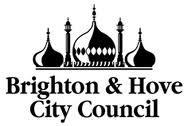Our lovely little industry has been bashed a bruised a little bit over the last couple of weeks from stories of stubborn councils and blatant pain-in-the-assery from groups like English Heritage and the National Trust. However, it appears that this grey cloud might have a silver lining! In the form of Brighton & Hove Council…
Bet you didn’t expect that did you?! I was emailed a report by my Twitter pal @PhilipDParry after he left me a comment on my last anti-PVC post. And the report makes for some interesting and pleasing reading. Before I go into more detail, the report basically states that after looking into all the material types when it comes to house works, PVC is the preferred option, though all materials can be considered providing they meet all the right objectives.
Here comes the detail then. Brighton & Hove council seemed to do some quite detailed research into what was the best material to use in home improvements and what the cost implications were. You can click a link at the bottom of this post to see the report and see the table they produced, but in essence they basically conclude that in almost every circumstance PVC is cheaper, and makes for much easier and cost effective maintenance in the long run.
They also mentioned that although the research they were given raised questions about possible public and environmental health problems with PVC, they acknowledged that since that report was given to them, more up to date and accurate information had been released giving information to the contrary. This is good as it is a clear sign that this council takes notice of NEW information and that PVC as a product has evolved way beyond the incorrect stereotypes. Something which I think the rest of the councils up and down the country could do with doing!
This was an interesting comment: That the Housing Management Sub-Committee recommend Officers continue with the current flexible approach, determining for each project the most appropriate materials taking account of up to date environmental issues and knowledge, residents’ requirements and building maintenance costs. Finally progress! The PVC industry isn’t trying to ram PVC windows into every council house and heritage building up and down the land. All it is simply asking for is to be recognised as a viable option in the decision making process. And the wording in that paragraph above states just that!
The long term maintenance costs seem to be a big issue for Brighton & Hove council. Near the end of the report they go on to say that while timber would be the ideal material of choice for things like windows and doors, the long term cost implications outweigh that preference. They have worked out that the maintenance required for timber windows would cost an extra £8.5m over five years and £30m over 30 years.
I won’t go into much more detail than that as it gets quite boring, but I think you get the overall gist of what the report is trying to say. If you have a spare hour free and really feel the need to read the whole thing, click here: Brighton and Hove PVC v Timber. One little footnote I’d like to make is that the report is from 2007 and the PVCu industry since then has made staggering progress when it comes to aesthetics, energy efficiency and recycling. I’m hoping that Brighton & Hove council have continued their open mindedness towards PVC as a material of choice.
I hope that in time other councils look at the work Brighton & Hove council have been doing and employ a similar strategy in the future.






